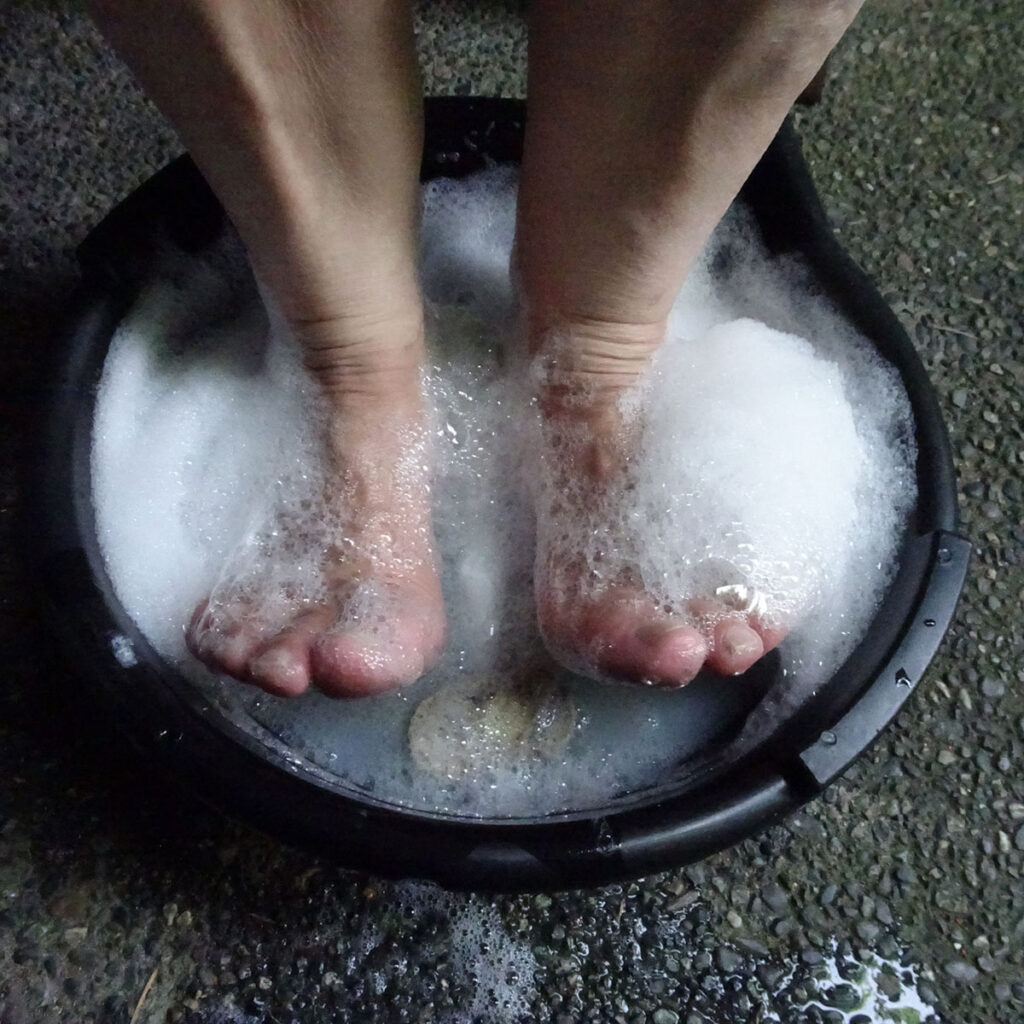When Should I Call a Podiatrist?

If you’re experiencing some type of foot problem, you might be wondering if you should see a podiatrist. Around 77% of individuals in the U.S. have experienced foot problems or pain in their lifetime. However, only a third of them have actually sought out the help of a doctor of podiatry. Here you’ll learn some reasons to visit one.
20 Reasons to Call a Podiatrist:
1. Ingrown Toenail
Some individuals have persistent ingrown toenails, while others only experience pain occasionally from a sharp toenail edge. A medical professional specializing in the feet could help with either of these cases.
You shouldn’t try to file or cut ingrown toenails yourself. This is because the infection could be hiding underneath the ingrown toenail surface and you can cause more damage than what was actually there. So, make sure you contact your doctor when the symptoms first begin.
2. Bunions
A bunion is an irregularity of your feet that causes the development of a bump on your large toe joint, making it so your big toe turns inward slightly. Another term for bunions is “hallux valgus.” There are several causes of bunions, including wearing narrow or tight shoes or family history.
3. Toenail Infection
Toenail infections aren’t fun, particularly if you must stand often. An infection can begin small, building up to where you can no longer leave it untreated. If you have a toenail infection, you may experience symptoms like:
- Swelling
- Pain
- Change in skin color or redness
- Pressure
- A bad smell
- Oozing
- A noticeable break in the skin
- Feeling hot to the touch
- Fever
4. Plantar Wart
This is a small growth that typically shows up on your heels or another weight-bearing area of your feet. The plantar warts might also grow inward under a thick, hard layer of your skin (callus) due to the pressure.
HPV (human papillomavirus) causes plantar warts. The virus gets into your body through small breaks, weak spots or cuts on the bottom of your feet.
5. Corns and Calluses
If you have circles of thickened skin on the sole of your foot or toes, it could be corns. Corns are your body’s way of preventing blisters on your feet, and they’re typically not painful immediately. Corns may be caused by bunions, hammertoe (an abnormal bending of one or both joints of the second through fifth toes) or poor-fitting shoes.
6. Plantar Fasciitis
Plantar fasciitis can cause pain in the lower area of your middle foot or bottom of your heal. It occurs when your plantar fascia ligament is strained from:
- Frequent standing
- Soft-soled footwear that has poor arch support
- Weight gain
- Long-distance running
You can develop it over time and you may experience pain ranging from dull to sharp. You might have more pain when you rest your feet for prolonged periods.
7. Diabetes
Diabetes can lead to nerve damage in the feet and other places of the body. The nerve damage can cause pain, numbness and ulcers on your legs and feet. If your diabetes is causing you foot problems, you’ll need to visit a podiatry professional.
8. Sports Injury
A sports injury can be caused by anything from tossing a football around in your backyard to participating in a sporting event. Foot sports injury symptoms are often high-impact and should be seen by a doctor of podiatric medicine as soon as possible. You’ll want to look for sports-related injuries such as:
- Limping
- Bleeding
- A feeling of popping or tearing
- Discoloration
- Swelling
9. Severe or Recurrent Cases of Athlete’s Foot
Athlete’s foot is typically found between your toes and is a fungal infection. But, this infection can spread, causing substantial itching, discomfort and pain.
You have a greater chance of being exposed to athlete’s foot-type fungus in a shower, gym or pool where individuals walk around barefoot. The fungus often thrives in damp, warm areas. Wearing damp and warm shoes can cause the growth and spread of fungus. It’s a highly contagious condition and can spread to other places on your skin like your groin, hands and scalp.
10. Heel Spur
Inflammation, pain or a bony protrusion at your heel in the front might be signs of a heel spur. These occur due to the growth of a calcium deposit between your arch and heel. A doctor who specializes in disorders of the feet may diagnose heel spurs through the pain you experience in your heel or through another foot problem like plantar fasciitis.
11. Hammertoe
You might have hammertoe if your second, third or fourth toe is:
- Pointing at an odd angle
- Bent in the middle of your toe joint
- Crossed
Poor-fitting shoes often cause hammertoe. Wearing footpads or inserts early on could help reposition your toe, however, it can become fixed in the crossed or bent position later on. You’ll then likely experience pain and require surgery. So make sure you contact your doctor when the symptoms first begin.
12. Claw Toe
Also referred to as claw foot, claw toe occurs when you have a first toe joint pointing up and your second one pointing down. It could come on suddenly or might be noticeable at birth. It may cause discomfort or pain, or none at all. Claw toe can be a sign of a severe medical condition such as diabetes, rheumatoid arthritis or cerebral palsy.
13. Gout
Gout is a form of arthritis that’s caused by uric acid build-up in your joint fluid and joint tissues, which occurs when your body can’t maintain uric acid levels. This build-up usually appears first in your big toe joint, and is marked by temperature changes. Your toe will become red, warm and swollen and cause pain at the slightest touch. Identifying triggers is the best way of preventing a gout attack. These triggers can be:
- Red meat
- High-purine foods
- Alcohol
- Seafood
14. Ankle Swelling
Ankle swelling in the evening might be a sign of retaining water and salt due to right-sided heart failure. Foot and ankle swelling could also be caused by kidney disease. Gravity causes the accumulation of fluid more so in your ankles and feet.
15. Discolored or Thick Toenails
If you have thick, cracked or discolored toenails, you might have toenail fungus. Tinea unguium or onychomycosis (fungal nail infections) occur when you have a fungus that’s usually in your toenails, that grows out of control.
16. Feet Numbness and Tingling
In a condition called Morton’s neuroma, nerve issues between your third and fourth bones of your foot could lead to burning, foot pain and a feeling you have something in your shoe. Generally, it affects runners. Overpronation and tight shoes make it worse.
Individuals with diabetes are more susceptible to blood sugar fluctuations. Diabetic neuropathy isn’t just one condition, but actually a group of conditions caused by diabetes, which cause foot health damage. High blood sugar levels, over time, can damage your nerves, particularly those in your feet. Other risk factors for nerve damage include a history of alcoholism, smoking or diabetic neuropathy in the family.
17. Open Wound that Doesn’t Heal
If you have a wound or sore that lingers over weeks or months, you should see a specialist in podiatric medicine. A chronic wound could cause harmful complications, including infection, gangrene and amputation. You can avoid serious issues by having the wound treated.
18. Flat Feet
Flat foot (pes planus) is a common structural deformity of the foot where your medial arch begins to collapse or is already collapsed. This deformity could be acquired or congenital if ligaments can’t support your foot structure any longer because they’ve become mal-aligned later in life, or they’re injured.
19. Severe Cracking or Peeling
Cracked or peeling heels are a common foot issue. A survey found 20% of individuals in the U.S. have cracked feet skin. It can occur in both children and adults. For most individuals, cracked heels aren’t too serious. It might cause discomfort when you’re barefoot. The cracks in your heels, in some cases, can become deep and cause you pain.
20. Joint Pain in the Foot or Ankle
There are various reasons for joint pain in your foot or ankle. Sprains and joint inflammation can cause foot or ankle joint pain. Many types of arthritis that impact your joints, bones and muscles could cause issues like stiffness, swelling and pain in your ankles. Inflammatory arthritis is a good example.
There are several types of inflammatory arthritis and can impact your feet in different ways. For instance, rheumatoid arthritis could impact many joints in your feet, whereas reactive arthritis often impacts the area around your heal or your ankle. It might also impact your toes, causing swelling and pain. Aside from issues in the joints themselves, individuals with inflammatory arthritis might have discomfort and inflammation in certain soft tissues and tendons in their feet.
Regardless of which foot problem you’re dealing with, it’s always a good idea to contact your foot specialist to have it evaluated.
Contact Red Mountain Footcare
If you’re experiencing any of these conditions above, it might be time to see a podiatrist. At Red Mountain Footcare, we treat all our patients as if they’re guests in our homes. Set up your appointment with Dr. Spencer Hardy to take a look at your foot problem and offer you the best possible treatment option. Contact our office today.
